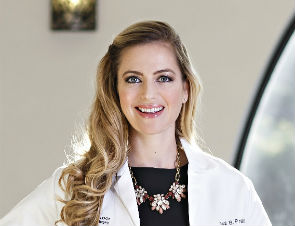
1. How did you become involved in clinical research?
I completed an ASDS Cosmetic Dermatologic Surgery fellowship with Dr. Jeffrey Dover at SkinCare Physicians in Boston that allowed me to assist in clinical trials from product testing to data analysis. Working with a group that already participates in clinical research allowed me to see how studies evolve and new products make it to market.
2. What is the best way for dermatologists to get educated on new products and treatments?
Involvement in our societies (such as the AAD and ASDS, to name a few) is a great way to stay educated on the latest technology in dermatology — whether it is a new product, treatment technique or procedure. Society membership comes with perks, such as journal subscription(s) and access to forums (such as Quest – ASDS Digital Knowledge Network), to help synthesize the amount of information that is continually being introduced into our field. Society membership also has the added benefit of maintaining a professional network with our colleagues and representing the field of dermatology on a larger front.
3. What is the biggest hurdle to overcome when bringing new products to market?
Many obstacles exist in product development. However, the classification of the product dictates the requirements to bring the product to market. For example, the legal classification as a “cosmetic,” “drug,” or “device” defined by its intended use will dictate the FDA requirements. “Drugs” and “devices” require FDA approval specific to its claim to treat before being released to the US market, whereas “cosmetics” do not fall under FDA regulations.
4. What are the challenges in introducing a new product and drawing interest from fellow dermatologists?
Once a product is FDA approved, physician and patient education is necessary to introduce the product to market. Clinical trials generally serve as the main data point driving product education. However, with increased use, personal experience generates comfort in integrating new products into practice and also enhances the product knowledge-base, including possible new benefits and/or side effects. One interesting aspect about medicine is that we are continually evolving our niche in dermatology with new products, techniques and potentially even new uses for existing products. The key is to develop these avenues appropriately and safely under federal regulations with patient care in mind.
5. What has been the greatest difficulty you’ve encountered in the skin care business?
In my opinion, patient education is a difficult barrier in dermatology. Although skin care seems to rightly fall under the umbrella of dermatology, patients seem to look to many other resources before their dermatologist when seeking skin care advice. One obstacle every dermatologist faces is helping patients sort through the amount of information they receive about skin care from editorials, blogs, parents, friends and even department stores. Taking the time to become educated on products, especially those with clinical data, and to in turn proactively educate patients is an important measure to help patients take care of their skin in a meaningful way in between office visits.

